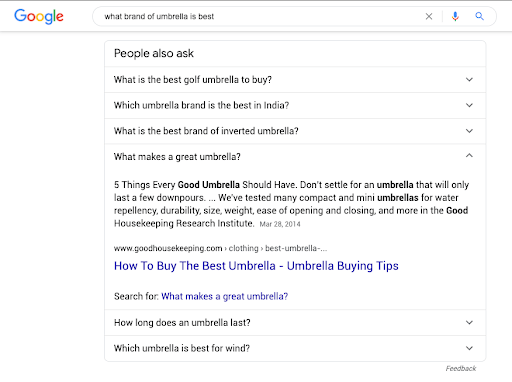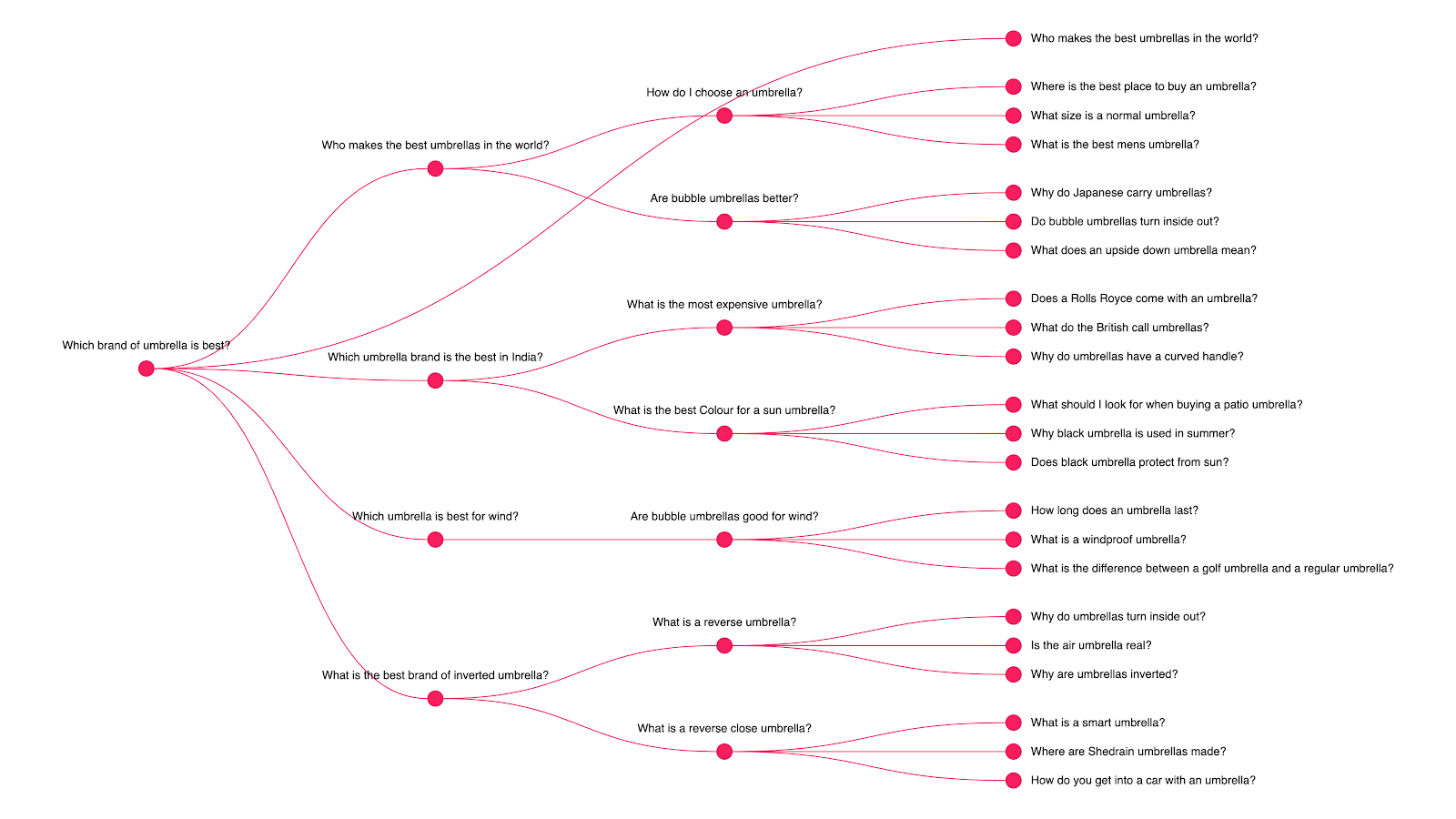People Also Ask: How to secure your spot on Google’s top SERP feature

Google’s versatile People Also Ask feature gives websites an additional chance to appear on the first page of the search engine results page (SERP) without “technically” having a page 1 keyword ranking. By following SEO techniques like longtail keyword research, creating insight-driven content, and optimizing the format of web content, your website can gain more search impressions through SERP features.
If you’re interested in exploring these techniques more in-depth, stick around so you can start adjusting your SEO strategy and give your website more exposure on the SERP through Google’s People Also Ask (PAA) feature.
What is PAA?
Google’s People Also Ask is an accordion-style SERP feature that shows questions and answers related to a user’s search query. PAA results are seemingly unlimited as you trigger more results as you click through the questions, but most users will not click more than a few of these. Just because you appear in PAA doesn’t mean you can’t also have an organic position on page 1.
There are different answer formats on PAA, including paragraphs, lists, tables, and video. People Also Ask won’t always be in the same spot; it can show up on different positions on the SERP depending on the query.

People Also Ask can be beneficial by driving additional organic traffic to your site. 74% of sites in PAA boxes aren’t on the first page of the SERP. This allows smaller sites that aren’t already dominating search to get more exposure ahead of their larger competitors. A large deciding factor to appear in PAA is the quality of web content.
How to rank for People Also Ask
A few of the top ways to rank for this SERP feature include:
- Long tail keyword strategy
- Insight-driven content creation
- Properly formatted content
- Developing a strategy from scraping
It is important to note that PAA is more likely to show up on the SERP with longer, more complex search queries. Over 72% of keywords with 10 words trigger PAA, as opposed to only 42% of keywords with 3 words. What does this mean for your content? It allows you to create unique, quality content around specific topics that answer specific questions. (For more on the BERT update and optimizing content to answer questions, read this article).
Creating content for specific queries, or questions reaps more rewards than just a PAA feature. This strategy aids in all search presence, even voice search since many queries that produce a PAA box tend to be more conversational in nature.
Long Tail Keyword Research + Insight-Driven Content Creation
The first thing that you want to do is find a question that is relevant to your page content. A fantastic tool to use is AlsoAsked.com, which allows you to plug in relevant keywords and questions to find more questions that users might be asking. We used the example “What brand of umbrella is best?” below:

You’ll get a sense of different themes with different types of questions, and you can generate content ideas, or optimize existing content to answer those questions. You’ll want to use keywords and phrases on your page that tie into the query; this might require some editing and re-optimizing of your page content if you already have the topic on your site.
Formatting Web Content
To rank for a PAA feature, you’ll also want to optimize the format of your content to fit the standards required for PAA. First, the question and answer should be clearly stated somewhere on the page. Then, take a look at the current result for the PAA question you’d like to rank for. Is it a video? A list? A paragraph? Update your content to contain the most performant formats, this will differ with different types of questions. If you’re going for a paragraph format, try to stay within 60 words and under when giving your direct answer, but no less than 30, as this appears to be the standard for most PAA answers in paragraph form.
Scraping
A more technical way to rank is to scrape for PAA listings. Ahrefs and Moz offer effective, time-efficient tools to perform this easily. These tools show which questions appear in the PAA feature and from that information, you’ll be able to strategize content and plan keywords around those queries.
When performing keyword research, you can choose to only see long tail keywords, questions, or even keywords that trigger specific SERP features. Utilize these keywords in your content strategy to increase your chances of appearing for the PAA feature.
Google’s People Also Ask SERP feature can generate more impressions and organic traffic to your website. If you think aiming to rank in a PAA feature fits your SEO strategy, it is wise to create a separate SEO strategy for PAA apart from your general SEO strategy. Not every page on your website is right for the PAA feature, so just focus on the ones that can offer a clear and concise answer to a question.
